How to Tapping Rubber Latex By Farmers Plantation Kalibendo
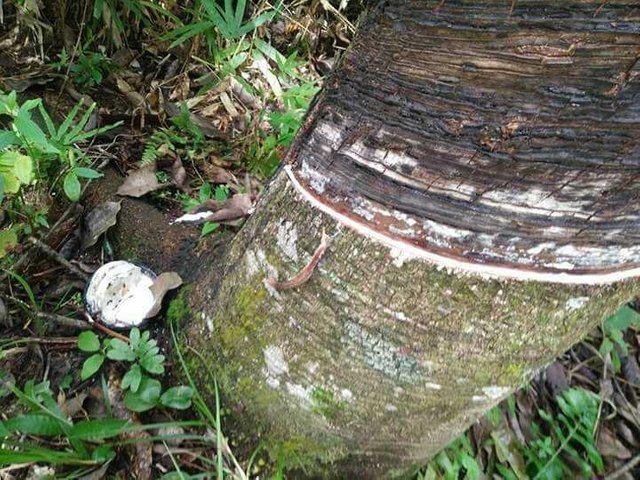
Today I will tell you about my visit to the Kalibendo rubber plantation, which here I take the data for the needs of the task in my college subject, here I see the activities of the workers how to tap the rubber trees and I certainly talked to the rubber farmers here.
In this conversation I think it is very interesting to lift my article on my post today.
Hundreds of people still depend their lives as rubber tappers in the area Kalibendo, District Glagah. How is their activity?
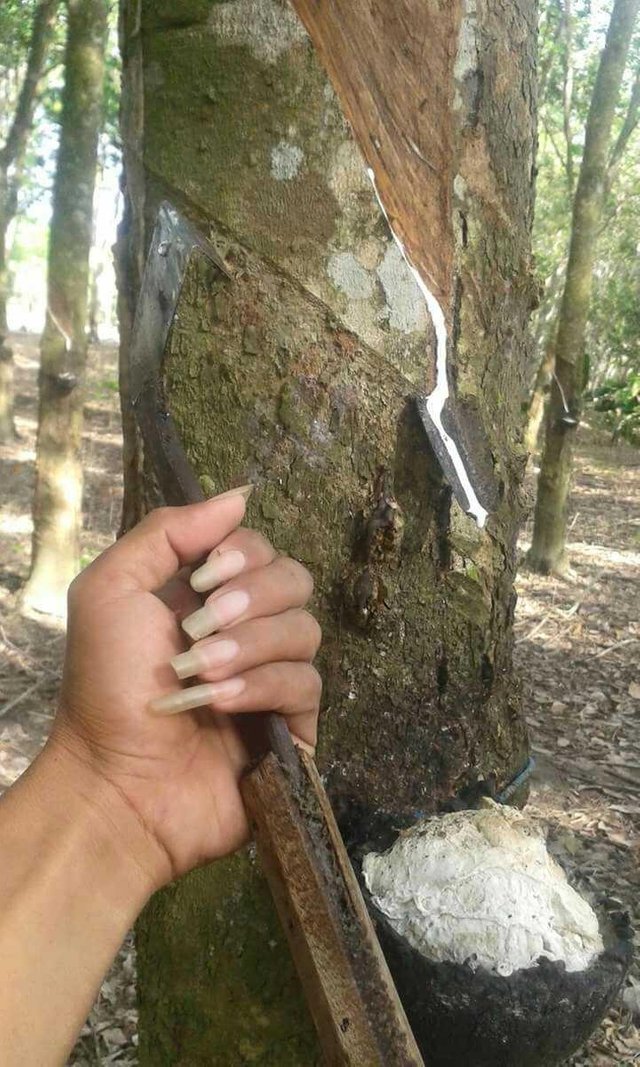
Plantation Kalibendo has about 150 rubber tappers. They started their activities since 03.30 in the morning. At that hour, they had already left for a rubber plantation scattered in several locations. The plantation does have a rubber plantation where the location is fragmented. By the time they start their activities, the eyes of the day have not yet risen and look still dark. To expedite its activities, hundreds of tappers using headlight illumination lighting devices.
Wiretapping activity starts around 04.00. At that hour, the workers are busy and are in their respective plots to start their activities. For one worker, his job was to tap 600 trees. Of the 600 trees, not all of them are tapped every day, but once in two days. To facilitate the work, the tappers divide into two intercepts. So, every day they only tapped 300 trees.
In addition to facilitate the work, 600 rubber trees were not tapped every day so that the tree does not easily die. If the rubber trees in tapping every day, then his age is not long. In order for the longevity of the tree, the workers divide the time of wiretapping. So one rubber tree, tapping is done every other day If the 300 trees are tapped, then 300 other rubber trees break, so on and so on. In this way, the age of the tree can last a long time. "If the rubber sap goes out though it is tapped every day, but the tree quickly dies," said one rubber tapper, Asnan.
The process of rubber tree tapping was not long. Wiretaps start at around 04.00 and finish at 05.30. Done in tapping, the workers do not go home but around see the results of tapping. Rubber pickup results began at 09.00. So the tapping process only lasts for six hours. At 09.00, the workers began picking up the tapping results in each tree.
To take the leads, the workers have a special container for lifting. The result of rubber tapping on the tree is filled with a special bowl. After the rubber accumulates in the bowl, the rubber liquid is collected in a special bucket made of stainless. The process of taking the rubber from the bowl and transferred to the stainless bucket was only finished at around 12.00. Workers provide two stainless buckets as containers before being deposited to the factory.
One bucket can accommodate up to 15 liters of rubber leads. And one other bucket, can accommodate up to 35 liters of rubber. Every day two different sized containers, always brought workers. The result of each tap rubber is not the same. Depending on the potential of rubber trees in tapper tapping. On average each tapper managed to get 15 liters of rubber every day. The result of 15 liters, is the minimum result obtained by workers.
In certain months, tappers can produce up to 35 liters of rubber per person penderes. The results of rubber tap leaking quite swiftly at the age of rubber tree leaves are old. In this month, the leaves of rubber trees are still young so the rubber produced is still not maximal. Within a year, there are certain times when rubber trees produce enough rubber latex. This happens towards the end of the year, where the leaves of the trees are old and almost fall off. That season, it usually happens four months before the close of the year.
In the four months before closing this year, tapper income also increased sharply compared to the months before. Understandably, the payment received by hundreds of tappers is dependent on the results obtained in obtaining rubber. If the gain of rubber tappers is below 15 liters, then the payments are calculated daily. In every day, they are paid Rp 27,200. So if they only get less than 15 liters of rubber in each day, then in one month workers only get a wage of Rp 816 thousand.
But if the acquisition of rubber more than 15 liters, then the income of workers will be more than Rp 816 thousand. Excess of 15 liters of rubber obtained, will be paid Rp 2,500 for each liter of excess. So that if the rubber production is abundant, it will give a considerable income to the workers. "Workers income is only from that. If less than 15 liters, we are paid daily. If it can be more than 15 liters, yes can be the premium of the excess, "said the man who has 18 years working as rubber tappers.
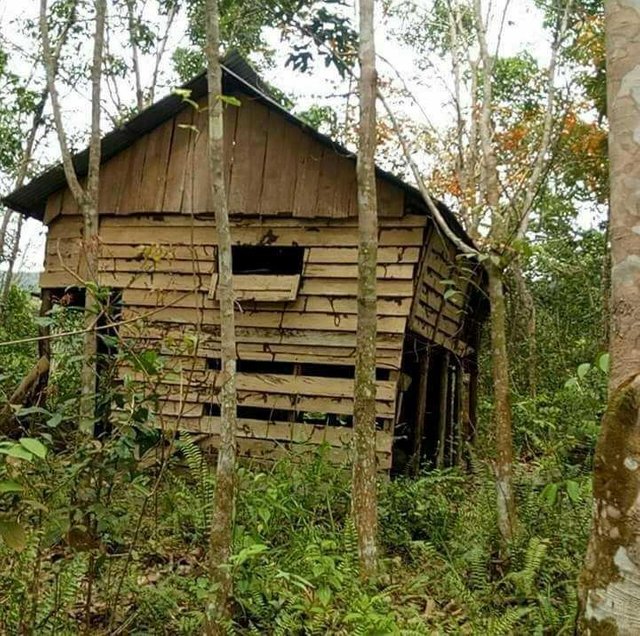
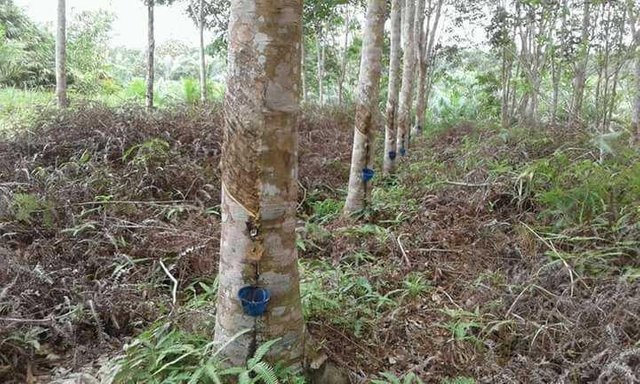
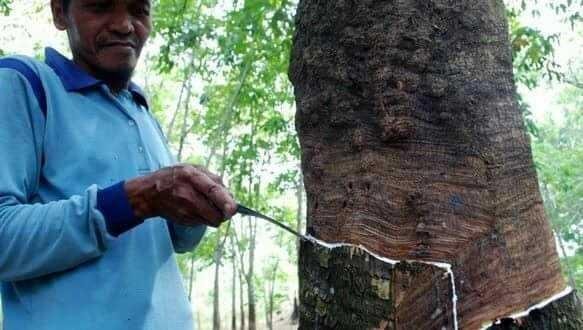
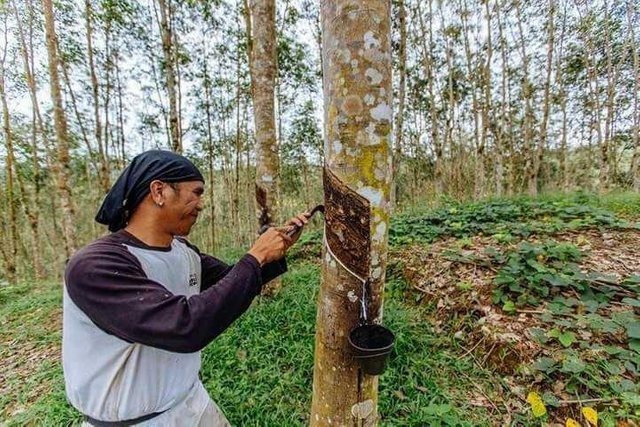
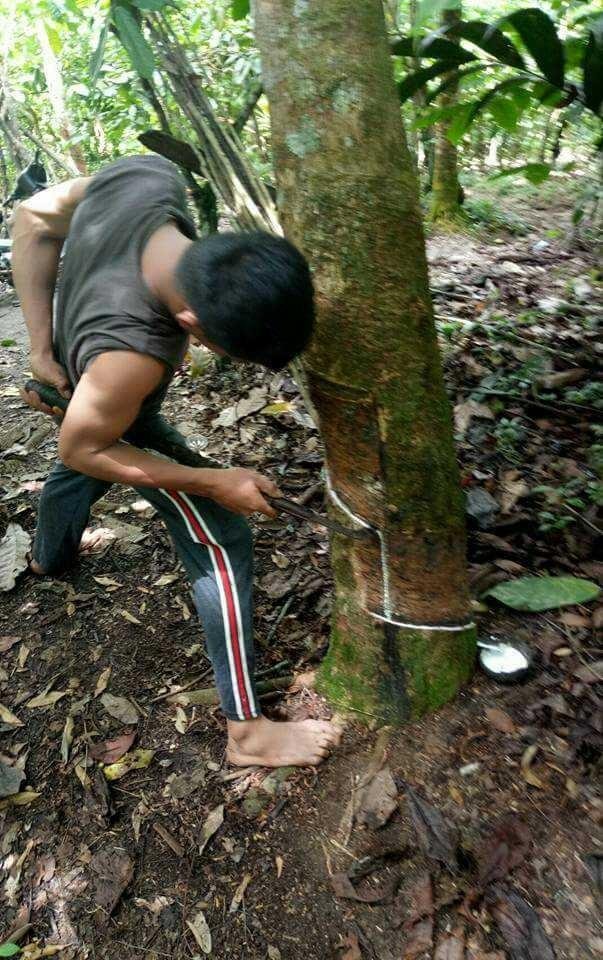
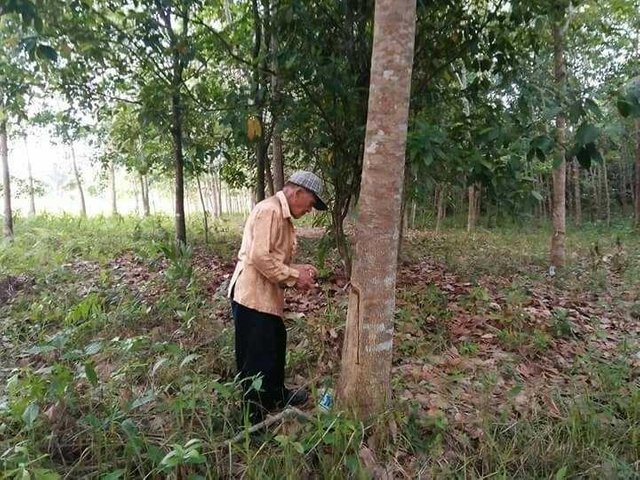
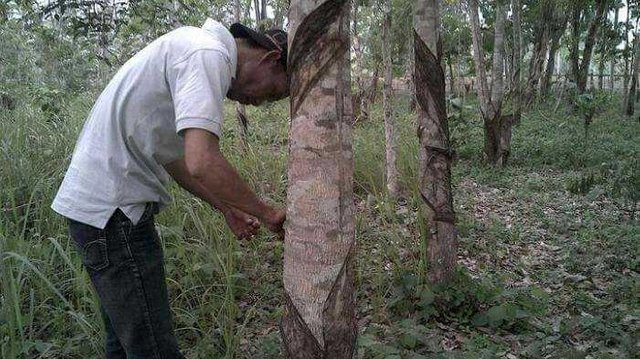
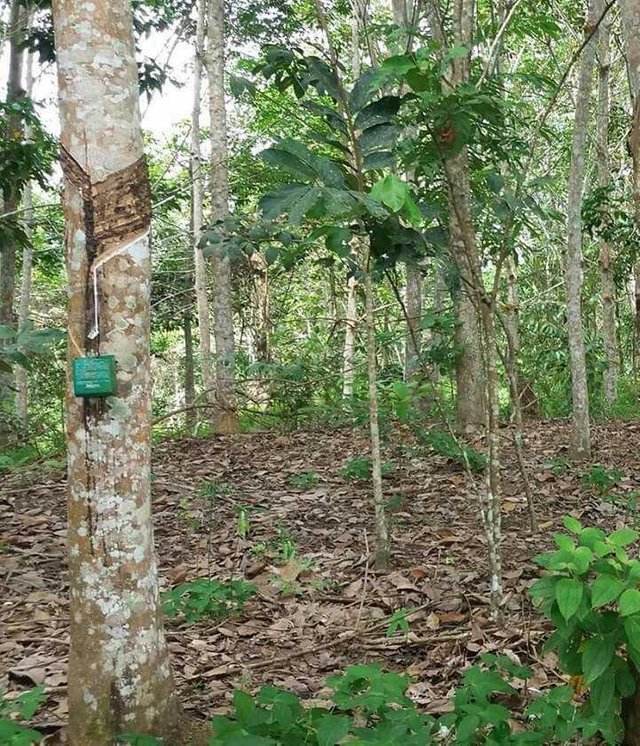
Rubber plants began in Indonesia since the Dutch colonial government entrenched in this country. Rubber seeds are brought from Brazil and planted in the Bogor Botanical Garden as an ornamental plant. Once known if the plant called Latin Hevea braziliensis this produces sap that is useful for the industrial world, rubber and then cultivated by private companies and plantations owned by the colonial government.
Along with the rapid growth of the automotive world and machinery industry, rubber becomes very important as a raw material in supporting its production. Rubber plants continued to be planted in Indonesia, including in North Sumatra (North Sumatra). Data from North Sumatra Plantation Office, current rubber plantation area of 591,262.92 hectares with production of 541,236.45 tons.
Rubber enters elite plantation commodities along with oil palm, coffee, cocoa and coconut in North Sumatra. The level of dependence of the people of North Sumatra on rubber is very high and this has a long history since the colonial era.
Not surprisingly, conversion of food land to rubber plantations is no longer a novelty in this area. The price is very promising, to be one reason the many land in this area planted with rubber. Economic value, so the farmers thought when deciding to make rubber as the main income.
Unfortunately, in the last ten years, rubber prices have been heavily influenced by economic growth in some big countries. The greatest correlation is shown by the economic growth of the United States (US) and China. Economic growth of these two countries is driving (in control) of rubber prices.
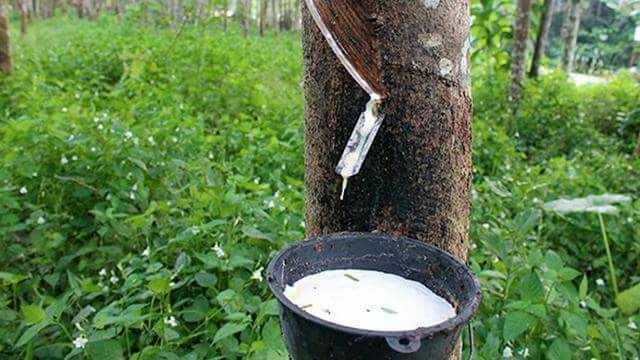
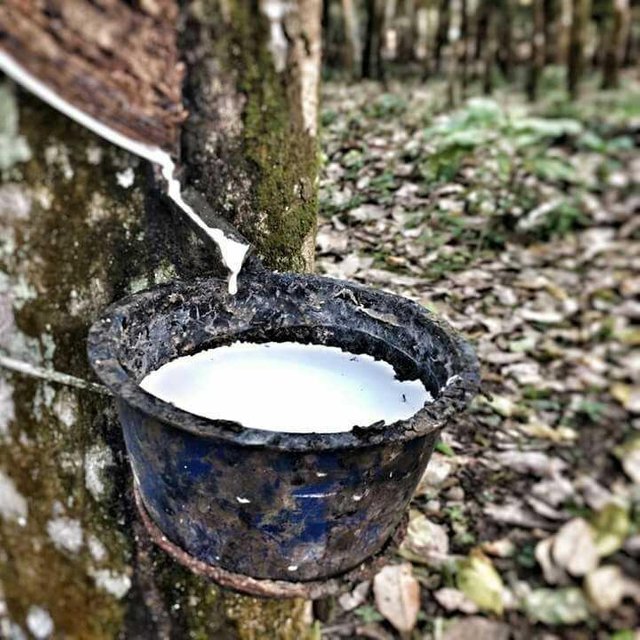
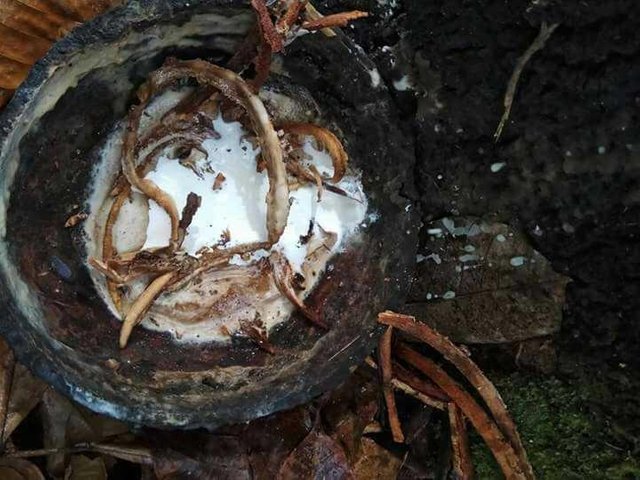
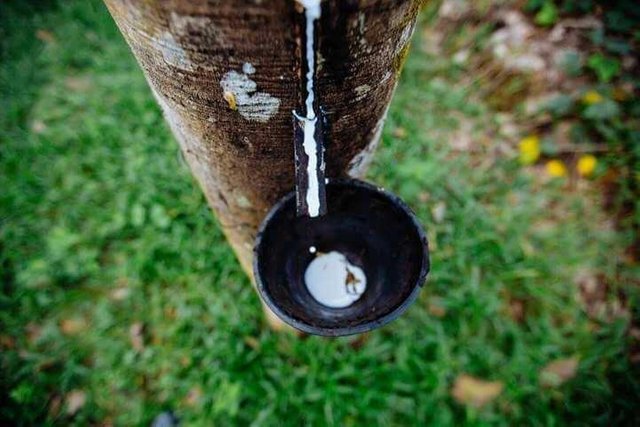
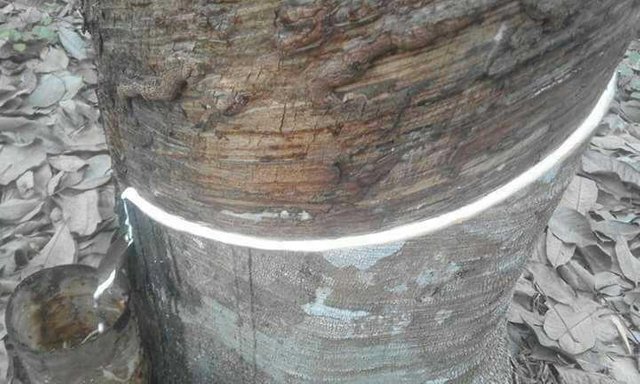
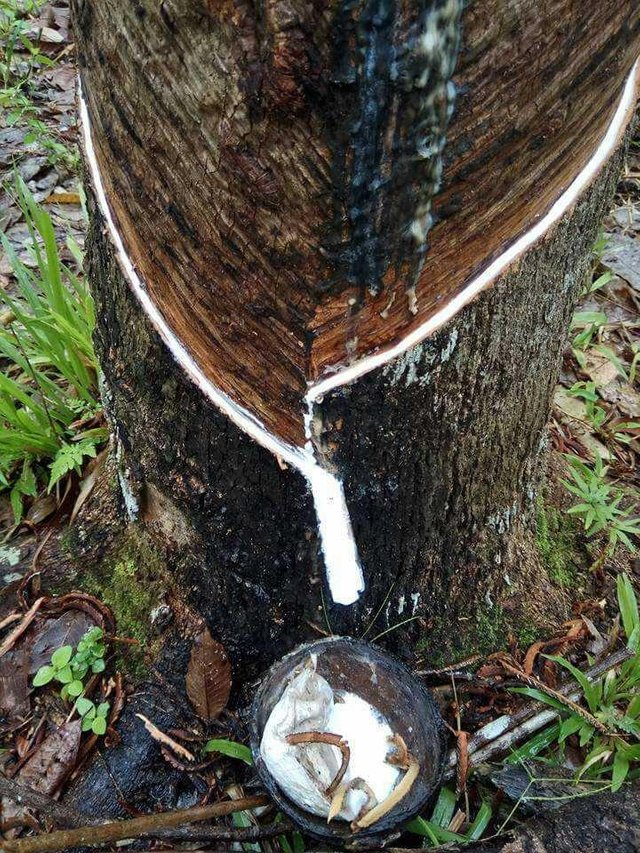
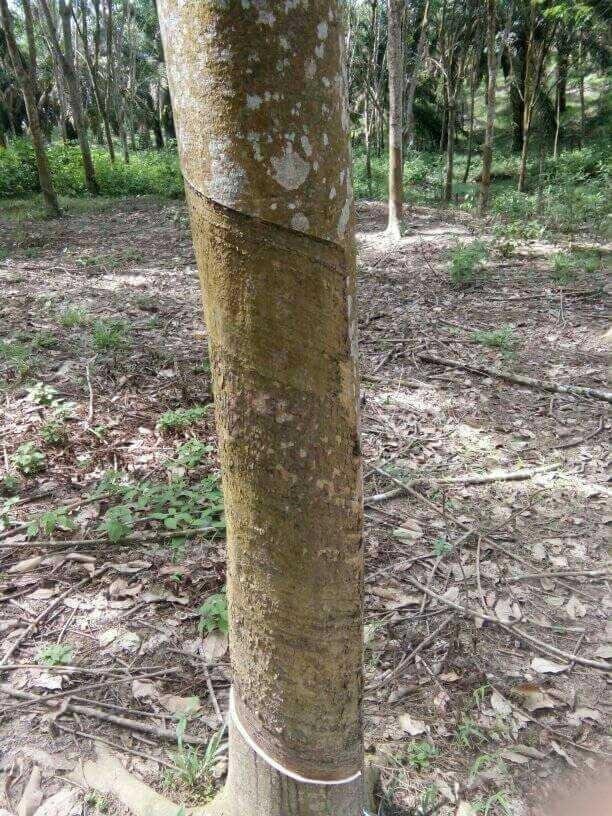
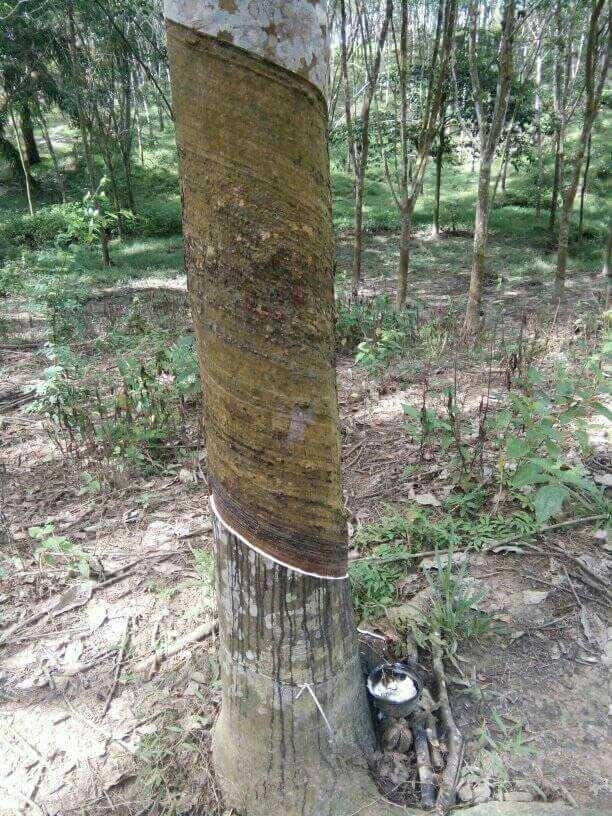


Before 2008, economists from Sumatra, Gunawan Benjamin, said, when the economy in some big countries like the US and China began to turmoil, the world rubber price was still able to survive and had touched the level of US $ 1.5 per kg. The performance of rubber prices also slumped to reach US $ 0.5 per kg during the economic crisis in the US in 2008.
US economic growth before 2008, continues to decline. US economic growth consistently fell until the housing crisis had made its move into negative territory.
Recorded at that time US economic growth had touched -8%.
The incident is exactly in 2008 to 2009. The same thing also felt China. Economic growth of Bamboo Curtain which had recorded double digit growth up to 14% fell sharply in the same year (2008-2009).
China's economic growth has even slipped to a level of 6%. The dark period, capable of being skipped in 2010 in which the US economic growth rate recovered in the range of 0 to 4%. At the same time, China's economic growth is even remarkable because it can push up to 12%. At that time, the world rubber price had touched the level of US $ 2.8 per kg.
"But after a momentary awakening and fresh breeze on rubber prices, the catastrophic reoccurrence of the economic crisis in the US continues into Europe, and in 2011 the end of 2012 is a back-to-back period for economic growth performance in the US and China. China's economic growth fell below 8%, "said Gunawan.
At that time, rubber prices continue to decline. After skyrocketing, the price of rubber slowly dropped below US $ 1.5 per kg and continues to this day. It is hard to say that the price of rubber is the hardest. The current US economic growth is still perched within the range of 0 to 2%. While China's economic growth continues to fall and only 6.7%.
Rubber prices in the country also come in the sluggish and now is in the range of US $ 0.7 per kg. Various efforts have been made to improve the price of rubber. Starting from the discourse of production restrictions, regulating export taxes, to the absorption of rubber for the construction of national infrastructure.
But all these efforts are not yet qualified to be a way out for the recovery of rubber prices. "The regulation of production is ultimately unsuccessful, tax regulation is also not an effective solution," said Gunawan, a weak demand side reflected in economic growth.
If economic growth in some major countries is still weak, it is difficult to expect rubber prices to recover. Until 2017, there has been no significant recovery. Even in the year 2018 is still doubt the price of rubber will get better again.
Because after the British exit from the EU or Britain Exit (Brexit), there is a new uncertainty arising from the global economy.
In the next year, rubber prices are expected to survive in the range of US $ 0.5 to US $ 1 per kg. Tax amnesty policies on the other hand can actually suppress rubber prices at the farm level.
"We hope that the government, especially Bank Indonesia (BI) will not allow the rupiah to strengthen even if there is a capital inflow that will flood the domestic financial market," said Gunawan.
Full rubber prices in the hands of the world, really make the fate of farmers shrubs in sad. Farmers who had tasted above ideal prices, can only complain when watching the rubber fallen throughout the year.
No half-hearted indeed. At the farm level, if the price refers in the year 2012 ago that can still be perched sweet at the level of Rp 20,000 to Rp 21,000 per kg, then now there is a difference of Rp 14,000 to Rp 14,500 per kg. Therefore, rubber sap at the farm level is only able to gain rupiah amounting to Rp 6,000 per kg.
Likewise, farmers have no choice but to wait for rubber prices to rise again. There is indeed a desperate to convert land to oil palm and oranges. But the number is not much.
The reason, most of the land rubber farmers are in the forest directly adjacent to the protected forest area. As a result, income continues to fall and the more difficult it is to achieve prosperity.
"As long as the rubber is down, the side job is hard to find, most of it beef cattle, that is the traditional way only 1-2 tail So the result is not like professional breeders Most of the farmers are ready to tap yes at home," said Suparno , a rubber farmer in Damar Itam Hamlet, Mekar Makmur Village, Langkat Regency.
In May 2016, rubber prices at the farm level had touched Rp 9,000 per kg. This price inflates the hope of rubber rubber farmers will continue to improve and can reach the level of Rp 10,000 per kg.
The price, farmers count, is the ideal level currently adjusted to the price of basic needs. However, hope is only hope. In fact, the rubber continues to fall and is now stranded at the level of Rp 6,500 per kg.
Suparno and other rubber farmers, hoping if the government has a policy that can help rubber farmers. Since the price of rubber has fallen, there has been no 'touch' of the government that could ease their burden (farmers). "We are like being abandoned," he said.
Most unreasonable, call Suparno, the price of rubber latex at the farm level is always cheap. But not with the finished goods, such as tires. He cited, when rubber sap is only Rp 7,000 per kg, the price of a tire at the same time of Rp 130,000 per fruit. So when rubber sap drops to Rp 6,000 per kg, the tire price does not go down either.
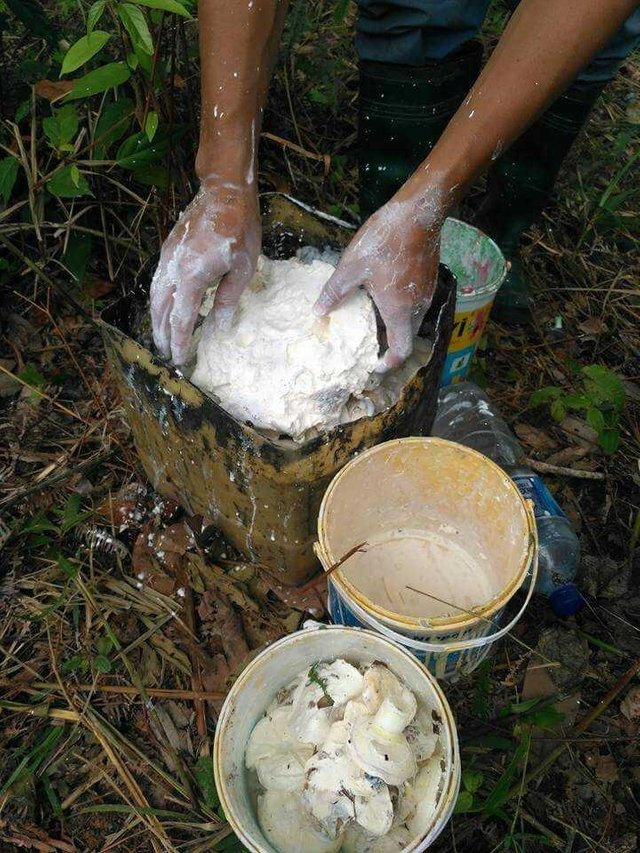
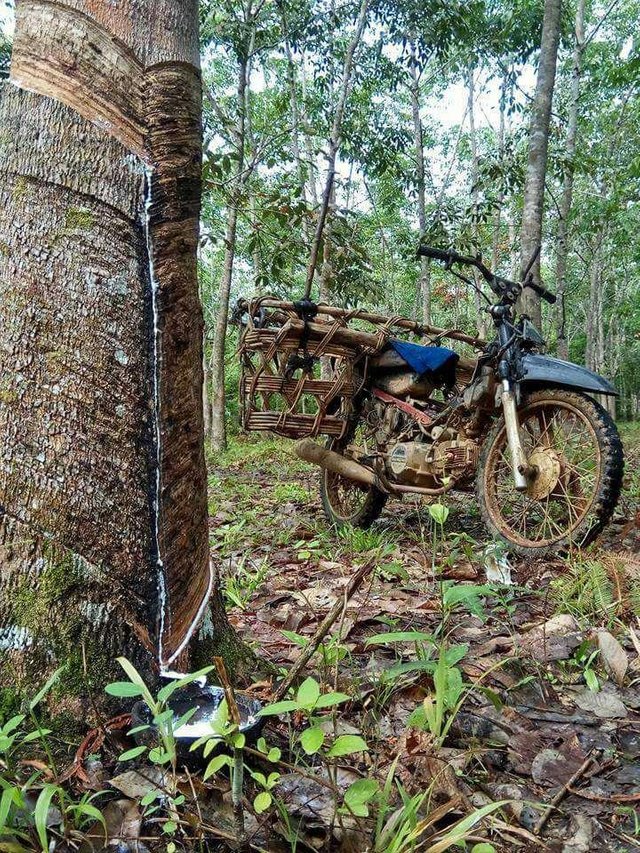
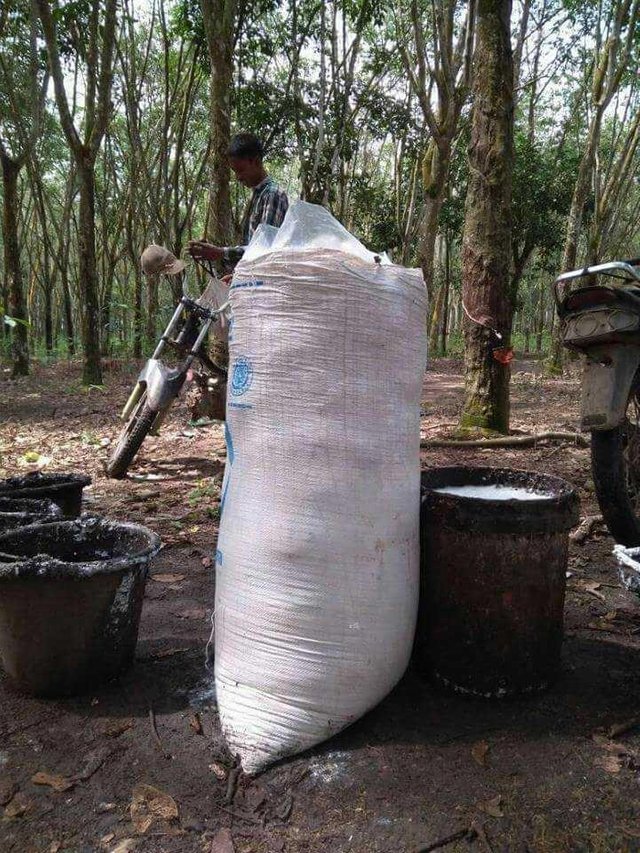
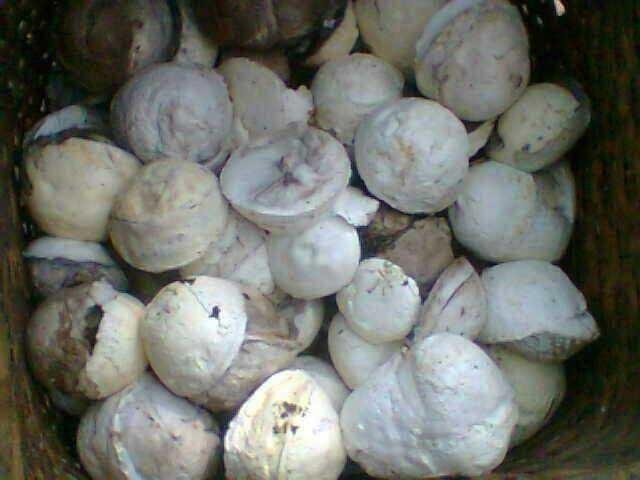
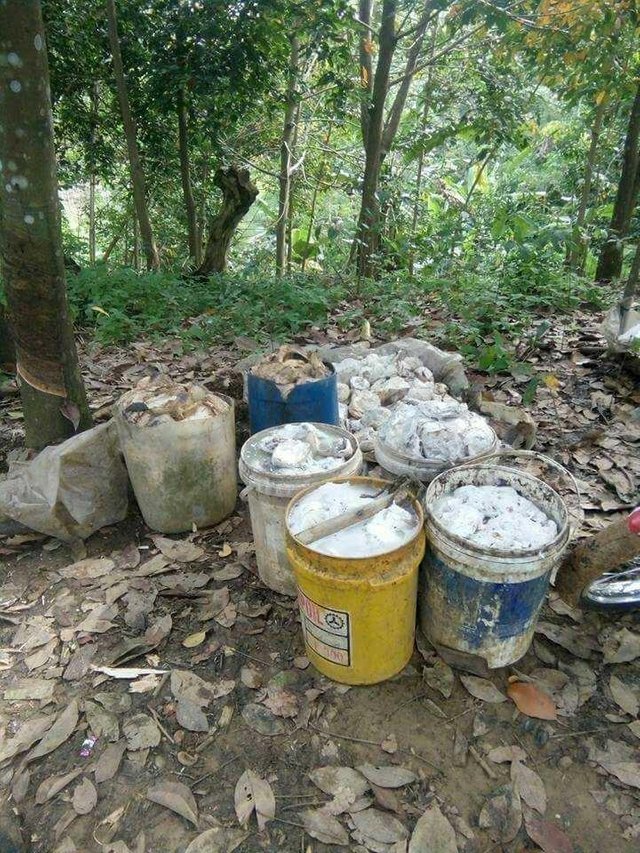
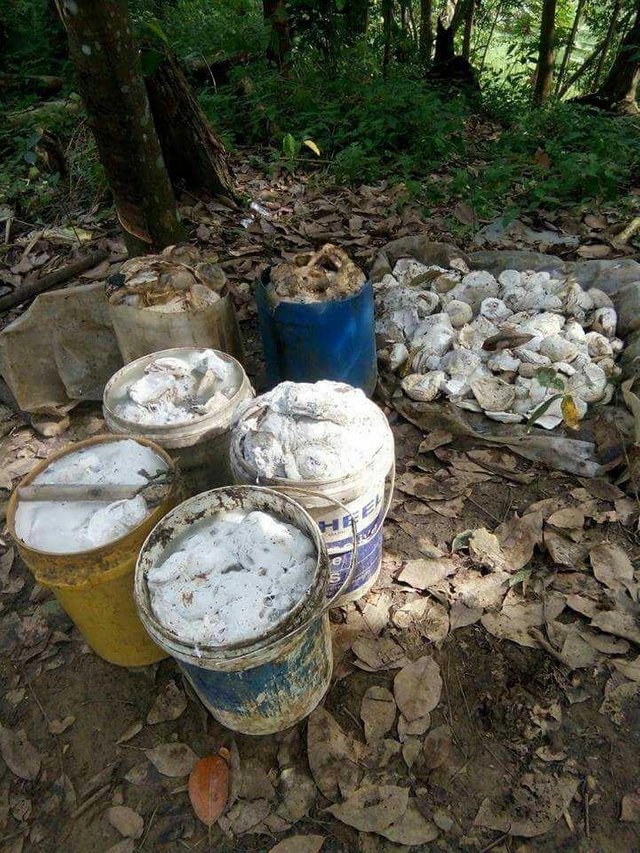
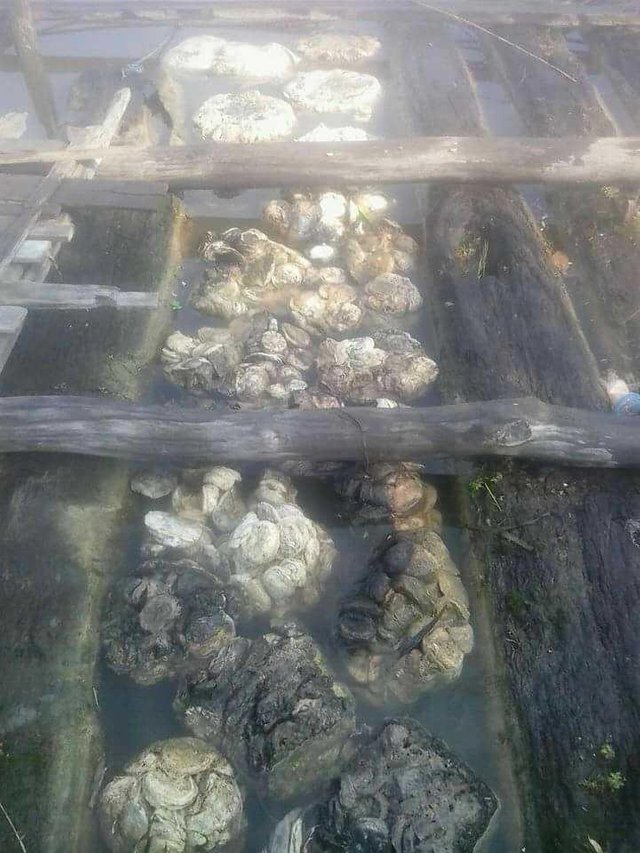
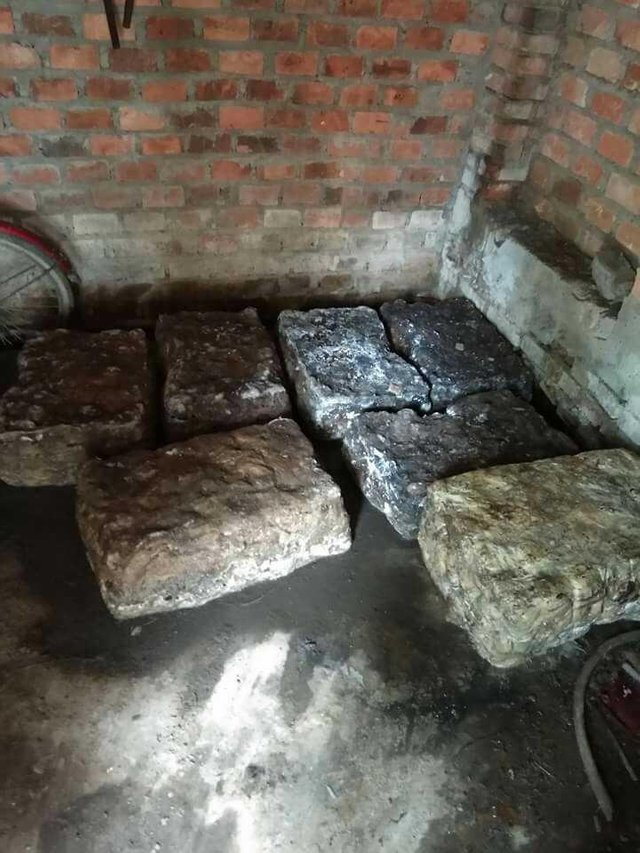
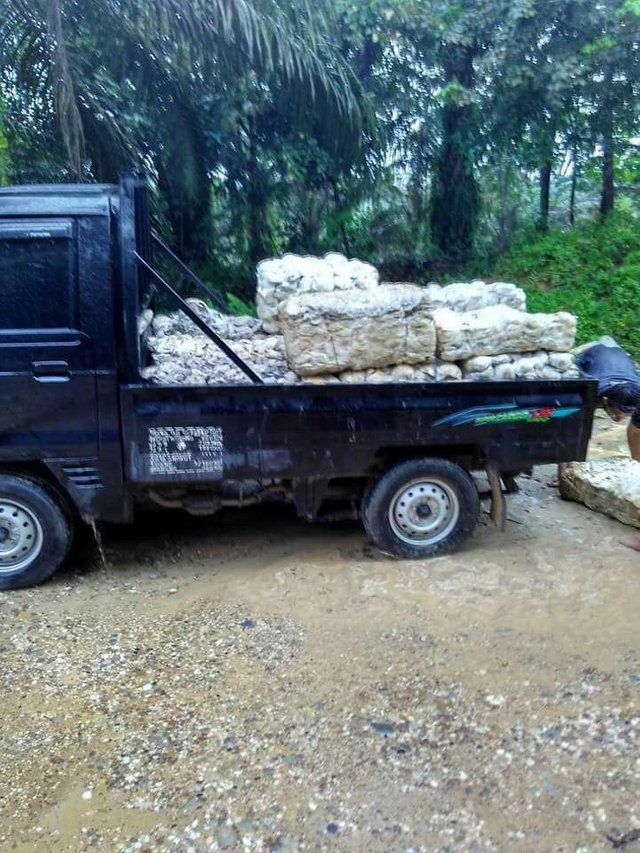
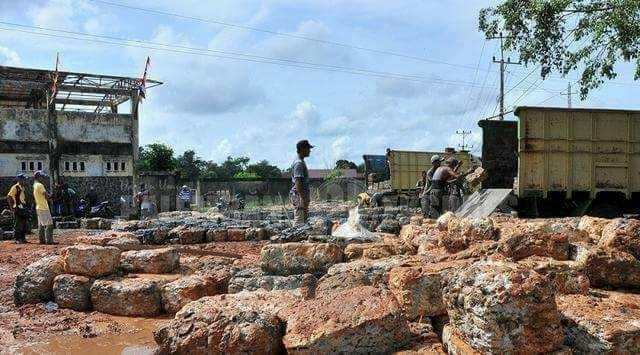
That is how rubber tapper workers in Kalibendo plantations, this post article is intentionally lifted considering there are still many who do not know how to tap rubber, hopefully this post can be useful for all friends steemit.
I thank @papa-pepper as the founder of #homesteading, and to @surpassinggoogle, @curator, @ocd, @yoo1900, @sndbox and other friends who have supported me to date in the STEEMIT community.

 item
item
It was very helpful. I did know that it was trapped every other day. I thought it would be more.
Btw which subjects do you have in college? What are you studying? I have a feeling we share a similar course and would love to learn more from you!
I take a subject in agriculture at Malikussaleh University of Indonesia, are you a student too?
if you want to share, I am very happy, we can discuss all things in the same field.
I will follow you @ryunamist
Thank you! I take a course in Food Technology but we don't get to have all the amazing hands-on experience like you. I love seeing your posts. I too feel motivated to be making posts related to my subject. ^^
(I made one a long time ago but haven't done anything since then.)
wah,, i feel so happy you like my post ,, why do not you continue post about technology of food like you did before?
maybe by sharing the post it can help people who may not know in that field.
When may ask, how old are you now? @ryunamist
I will do it now when I can :)
I'm 20, btw.
wow..you are very young, I hope you can do it, let alone it's something that field you mastered, good luck friend.
Well, I'm almost 21 so maybe a little older. xD
Thank you for the heads up! I would love to share more knowledge with you in the future.
Hi there. Trustoria ( https://trustoria.com/scientist/Meteorologist ) has truly revolutionized the way I search for professionals. Thanks to their advanced search capabilities, I can easily find people by criteria such as city, name, profession, and even specific professional specialties. I can recommend.